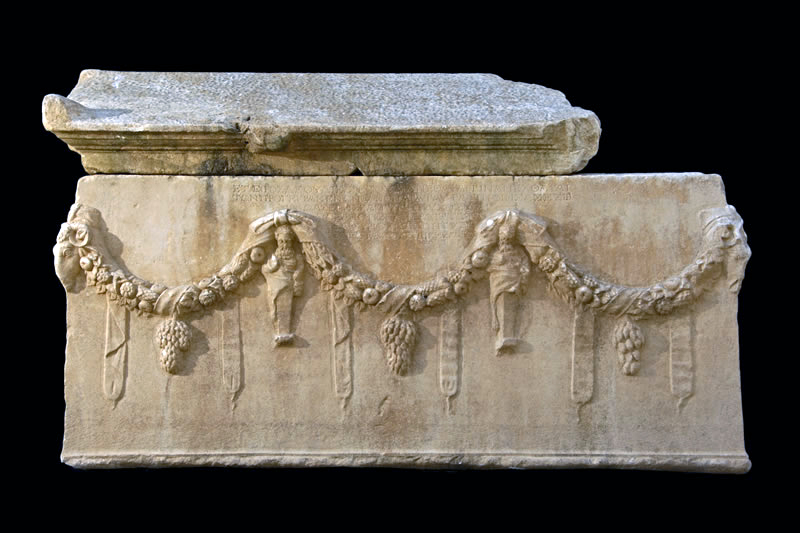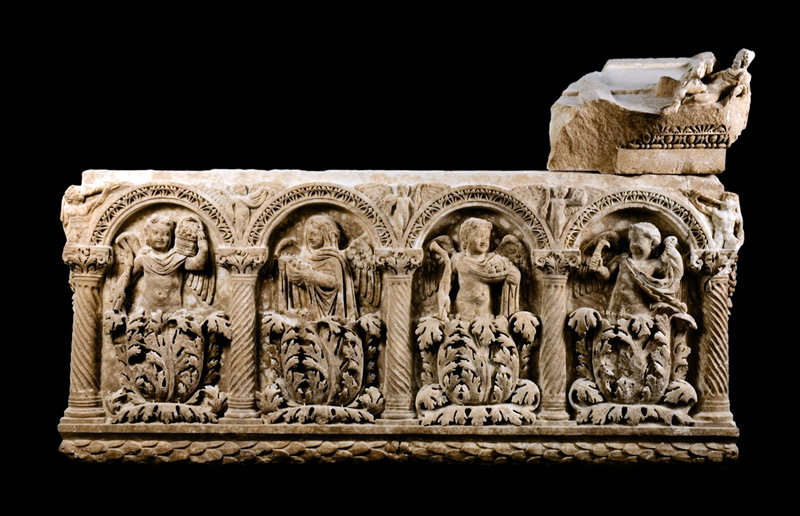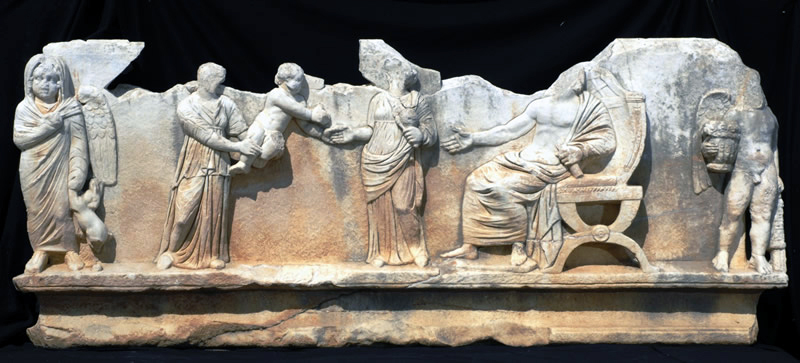Sarcophagi
Aphrodisias preserves an extensive body of sarcophagi from a single urban community of the Roman period. There are some 700 pieces: whole sarcophagi, lids, and fragments. The earliest are of the first century BC, the latest of the fourth century AD, and many were re-used for new burials in late antiquity. Many carry detailed inscriptions that tell about who had them made, who owned them, and who was to be buried in them. This body of material offers a wide field for the investigation of a local, propertied society through its burial monuments and its self-representation on them.
Sarcophagi come from all around the city, mainly from the main roads into and out of the town to the northwest, east and southeast. Some sarcophagi, worked on all sides, were displayed on platforms in the open; most are worked only on three sides and were displayed in tomb buildings. The great majority of the sarcophagi are local products, made in two main stereotyped formats, arcaded and garlanded, that are slightly and endlessly varied in scale, quality, and decoration. The arcaded chests carry a single figure in each intercolumniation: divine figures, portrait figures, or a combination of both — for example, Muses with a husband and wife, where the wife can take the place of the ninth Muse. The garland sarcophagi follow a narrow range of designs. Typically the chests are decorated with a central tabula supported by two putti and a garland to each side, which is carried by a Nike figure at each corner.
Columnar Sarcophagus with Erotes as seasons
The sarcophagus is a virtuoso work, richly decorated with four Eros figures springing from deeply undercut acanthus plants. The columns have composite capitals and spiral fluting, and each bay contains an Eros and an acanthus calyx. Eros A represents Autumn. He wears a chlamys around his neck, a fillet with two clusters of ivy leaves above the brow in his hair and holds a staff in his right hand and a basket of grapes in his left. Eros B represents Winter. He wears a veil adorned with river reeds and carries fruit (figs and pomegranates) in his drapery. Eros C represents Spring. He wears a chlamys and fillet with clusters of ivy, and his left hand supports drapery containing assorted fruits (pomegranates, grapes). Eros D represents Summer. He wears a goatskin on his right shoulder and across his chest and has wheat in his hair; he holds a pruning knife in his right hand. On the partially preserved lid is a reclining Ganymede acroterion. The execution of the sarcophagus is of outstanding quality. Seasons sarcophagi are otherwise unknown at Aphrodisias. The topic becomes popular elsewhere in the Roman Empire in the third century.
Education Sarcophagus. Nurse, baby son, and parents
All four sides carry figured decoration whose subjects are exemplary scenes from the domestic and religious life of a sarcophagus-owning family. Representations of the seasons stand at the corners. The better preserved long side has three figures: a woman (nurse?) hands a naked infant boy to another woman (probably the mother) who gestures towards the child and holds a spindle. At the right a man (probably the father) wearing a himation without chiton sits on a high-backed chair. He holds a book roll and gestures towards the child too. The scene is to be interpreted as a father’s acknowledgement of a new-born son.







